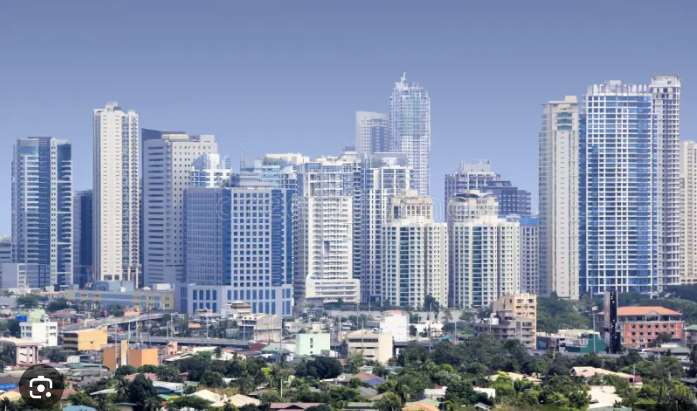Philippine banks are set to maintain a positive outlook over the next two years, as revealed in the 2023 Banking Sector Outlook Survey (BSOS) conducted by the Bangko Sentral ng Pilipinas (BSP).

Banks across the industry anticipate significant growth in key areas, including assets, loans, deposits, and net income, signalling confidence in the sector’s resilience despite prevailing challenges.
According to the survey, Philippine banks expect double-digit growth in their financial performance, with institutions aiming to uphold strong capital and liquidity positions to ensure stability and resilience. The survey results underscore a collective optimism among banks that the industry is well-positioned for expansion, despite the uncertainties in the broader economy.
Philippine banks to benefit from improved loan quality, NPLs
One of the key takeaways from the 2023 BSOS is the Philippine banks’ positive outlook on the quality of their loan portfolios. A declining percentage of respondent banks expect non-performing loan (NPL) ratios above 5 per cent over the next two years.
This year, only 48.7 per cent of banks anticipate NPL ratios exceeding 5 per cent, a slight improvement from 52.4 per cent recorded in the 2022 survey.
Among the banking groups, foreign banks and universal and commercial banks are the most optimistic regarding their NPL ratios. Foreign banks, in particular, foresee their NPL ratio falling below 1 per cent, while universal and commercial banks expect their NPL ratios to settle within the 1 to 5 per cent range. This reflects a growing confidence in the sector’s ability to manage credit risk.
However, smaller banking institutions, such as thrift banks, rural banks, cooperative banks, and digital banks, express more caution. A majority of these smaller institutions expect their NPL ratios to exceed 5 per cent, suggesting a divergence in expectations between larger and smaller players in the industry.
To mitigate the risks associated with potential loan defaults, most respondent banks plan to maintain a high NPL coverage ratio. This approach ensures that banks are prepared for potential losses by setting aside adequate loan loss provisions. Additionally, restructured loans are expected to remain a minor component of the overall loan portfolio, with most banks projecting restructured loans to account for only 2 per cent of their total loans.
Focus on corporate and retail lending, digital transformation

In terms of strategic priorities, the banking sector remains committed to expanding corporate and retail lending. Many banks are focusing on providing financial support to key sectors, including micro, small, and medium enterprises (MSMEs), real estate, and households.
This continued emphasis on lending aims to stimulate economic growth across various sectors, particularly in areas where financial access is critical for development.
The banking sector is also taking steps to align with global sustainability goals. Many respondent banks indicated that they plan to support sustainable and green projects in the coming years, recognizing the growing importance of environmental, social, and governance (ESG) initiatives in shaping the future of the financial industry.
Additionally, more than half of the respondent banks are investing in digital transformation as part of their growth strategy. The push for digitalization aims to enhance the accessibility and efficiency of financial services, with banks offering more innovative and customer-centric products.
By leveraging digital platforms, Philippine banks seek to meet the evolving needs of consumers while improving operational efficiency.
Risk management and governance

Despite the positive growth outlook, the survey highlights that Philippine banks remain vigilant about potential risks. Credit, operational, and macroeconomic risks are identified as the primary concerns among banks. In response, institutions are continuously enhancing their risk governance frameworks to safeguard the interests of depositors, investors, and stakeholders.
The focus on risk management underscores the importance of maintaining the safety and soundness of financial institutions in a volatile economic environment. As global and domestic uncertainties persist, banks are prioritizing robust risk mitigation strategies to ensure their long-term stability and profitability.
Industry resilience and the road ahead
The 2023 BSOS paints a picture of an industry that remains resilient and optimistic about its future, despite challenges posed by macroeconomic uncertainties and potential credit risks.
With Philippine banks anticipating growth in their key performance indicators, the sector is well-positioned to contribute to the broader economic recovery of the Philippines. Earlier this month, the BSP reported that Philippine bank lending rose to 10.4% in July this year, boosted by key sectors such as outstanding loans to residents, and net of RRPs, among others.
The sector’s focus on corporate and retail lending, digital transformation, and sustainable finance reflects its adaptability and commitment to long-term growth. At the same time, banks are mindful of the risks ahead and are taking proactive measures to strengthen their governance and risk management practices.
For a detailed overview of the 2023 Banking Sector Outlook Survey, the full report is available on the BSP’s official website.







